- Make It Yourself Lavender Heart-Shaped Bath Bombs!
- 20 Things You Never Knew About “Down There”
- 12 Best Foods For Those Suffering From Arthritis Pain
- 12 Personal Hygiene Mistakes Almost Everyone Makes (Mom Never Told You About #4!)
- 15 Medicinal Plants And Herbs From The Cherokee People
- 12 Mind-Blowing Benefits Of Drinking Coconut Water During Pregnancy
- 12 Outstanding Winter Foods That Won’t Fatten You Up Like A Christmas Turkey
10 Super Toxic Foods and the 10 Best Detoxifying Foods You Can Eat

Photo credit: bigstock.com
For anyone interested in eating healthy then there are a few foods you should simply avoid at all costs. Some of these foods might surprise you while others are no brainers. Still, some foods have a bad reputation but perhaps you think it won’t be so bad if you ate it just this once. Just this once, however, often turns into regularly. If you are unaware of the health risks, then chances are pretty good that you will continue to eat something toxic.
On the other hand, Mother Nature has made things fairly easy for us and provided a wide range of healthy and detoxifying foods that are terrific for our health. Keep reading for a list of the 10 toxic foods you need to eliminate from your diet and the 10 super detoxifying foods you should eat every day.
1. Bacon
OK, bacon is super delish! Everyone knows that, it’s not up for debate, but bacon is also one of the most toxic foods you can eat! Just one serving of bacon (about 3 slices) has 435 mg of sodium. This means that if you have hypertension, bacon is a flat out no-no. It’s loaded with nitrates, smoke flavoring, and artificial colors.
Some bacon meat is cleaned first with ammonia to kill pathogens, and then they add those artificial colors to make it look clean and fresh. If you see the words “processing agents” on the package, then you know they used ammonia or bleach to clean the meat. (Major yuck factor.) In fact, if you ate just one serving of bacon six days a week, you would increase your risk of stroke or heart disease by as much as 41 percent! So although no one thinks bacon is a good thing, it’s much worse than that.
The next time you go to that County Fair and they offer you a deep fried bacon wrapped ice cream, you really need to pass.
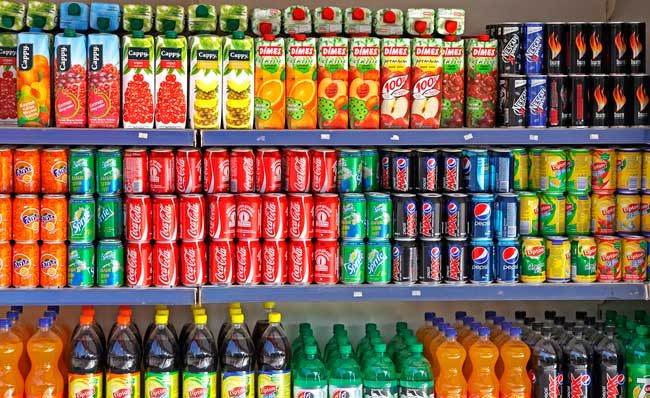
Photo credit: bigstock.com
2. Sodas
This is another one that sounds like a no brainer, but seriously, is there anyone on the planet that thinks sodas are healthy? But knowing this has very likely not stopped you from having one with your lunch every day, has it? Be honest! Well, you should know that drinking sodas are linked to cavities and tooth decay.
Many sodas also contain something called brominated vegetable oil. You might wonder what vegetable oil is doing in a soda. This is used to keep the artificial flavors they add from separating and coming to the top of the soda. If that isn’t disgusting enough, this ingredient is linked to skin problems, nerve disorders, and memory loss.
And we are only talking about sugared sodas; artificially sweetened sodas are a whole ‘nuther bag of ills. Most Americans eat entirely too much sugar and, believe it or not, a lot of it comes from sodas. High sugar diets can lead to diabetes and heart disease. Ditch the soda habit and see how much better you feel!

Photo credit: bigstock.com
3. Corn
One of the most well-known GMO crops around. Avoiding corn is certainly a no brainer, but remember to think about all the foods you eat that are made with GMO corn, including cereal, tortillas, corn oil, corn meal and corn flour, and tamales, for example. More than 90 percent of all corn grown in the USA is GM corn.
Unless you are buying your corn from a small, private farmer, such as one you might meet at a farmers’ market, you are most likely eating GM corn. In studies done with mice and rats, GM corn showed accelerated growth in mammary tumors and tumors in the reproductive systems. Even though Big Agra, such as Monsanto, will try to tell you that these food products are safe, there have been almost no studies to show that, but plenty of studies to show that these foods have been linked to premature death, gastric lesions, and kidney damage.
Why risk it? Don’t be Big Agra’s guinea pig; avoid GM corn.

Photo credit: bigstock.com
4. Canola Oil
What exactly is canola oil? Have you ever seen a canola plant? No? That’s because there isn’t one! Canola oil comes from the rapeseed plant and there is one thing everyone can agree on: rapeseed plants stink. In order to make “canola” oil, the rapeseed plant goes through a chemical process and is deodorized it with a compound called hexane. Hexane is a vapor component of gasoline.
Read that one again. Gasoline. Sounds tasty doesn’t it? Have you seen those bottles of canola oil that state that they are “organic”? What could possibly be organic about hexane? Makes you wonder, doesn’t it? When this oil is being made, any healthy nutritional value gets processed right out of it, which is why you should never use this to cook with and you should never consume any foods that contain this.
Just something to note, about 25 years ago, the FDA outlawed canola oil in infant formula because it retards growth. Apparently, the FDA thinks this is bad for children, but OK for you. Gee, thanks. Read more about dangers you should know about canola oil.
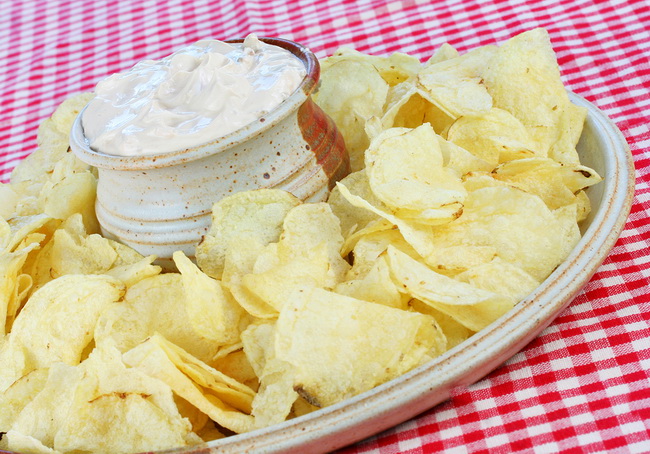
Photo credit: bigstock.com
5. Potato Chips
Alright, so no one needs to tell you that potato chips aren’t the healthiest things you can eat. Hasn’t stopped you from eating them now and again, though, has it?
The problem with potato chips is that they are fried at super high temperatures; this is how they get so crispy. Frying at such high temperatures, however, you turn potatoes into carcinogenic foods filled with the dangerous substance called acrylamide. Studies done with animals show that acrylamide in the diet increases the risk of developing several different types of cancer, including stomach and colon cancer. The World Health Organization, along with the Food and Agriculture Organization state that acrylamide in fried foods are a major concern.
Even the International Agency for Research on Cancer says that this substance is a possible carcinogen in humans. You already know that potato chips are high in salt and if you are struggling with hypertension that you need to avoid these salty snacks. But since they also carry a cancer risk, even if you don’t have hypertension, you should just say no to these little snacks.
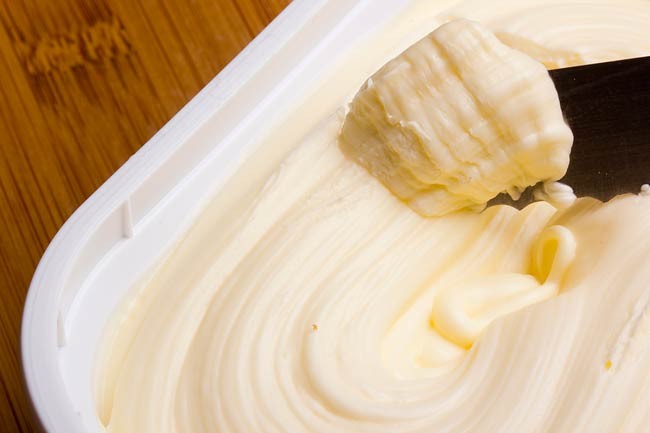
Photo credit: bigstock.com
6. Margarine
Almost all margarines are made with high processed vegetable oils, and although that might sound healthy, it’s not. This means that margarine contains large amounts of very unhealthy trans-fats. These types of oils were virtually nonexistent in our foods until the early 1900’s when new machines and chemicals made it possible to extract oils from rapeseed (canola) and corn.
Butter is a natural substance, as is coconut oil, but vegetable oils cannot be obtained other than through a chemical process which, while removing oil from these vegetables, removes any healthy attributes that these veggies had to begin with. Don’t forget, also, that canola, corn, and soy are almost exclusively GM products. When changing these vegetable oils into margarine they must undergo another process called hydrogenation, which makes these oils solid at room temperature. During this process is when those dangerous trans-fats are created. Yum, nothing like chemically processed, overheated, deodorized margarine on your toast in the morning!
Whipped butter is a much healthier, natural option but if you can’t bear to part with your margarine, try using a reduced fat margarine in a tub that contains no trans-fats.
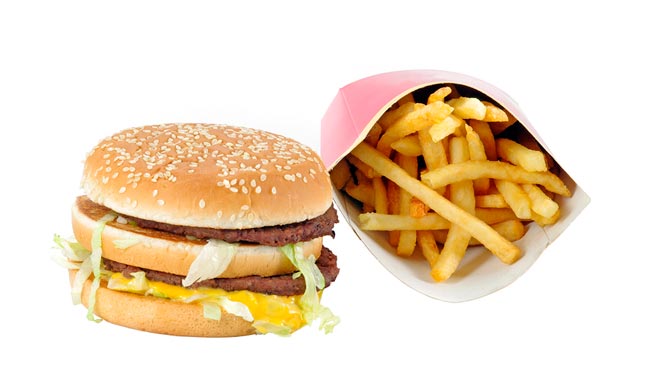
Photo credit: bigstock.com
7. Fast Food
If you have seen the movie “Supersize Me” then you are already aware of the dangers fast foods have on your weight, and no one needs to be told that fast food does not equal healthy food. Still, fast food chains continue to pop up due to their popularity. If you knew the truth about what goes into some of the food these places produce, you might lose your lunch (pun intended.)
For example, you think ordering something as simple as eggs from some of these places can’t be too bad, right? What could they do to an egg? Take another look. If you read the information labels, most fast food eggs contain eggs and something called “egg blends.” They don’t mean that they blended different types of eggs, they mean eggs are mixed with things such as dimethylpolysilozane, a silicon used in toys, calcium silicate, a sealant used for concrete, and glycerin, a softening agent used in soap and body lotion.
This is just one example of one food fast food companies are dishing up for you. Dump that fast food habit before it takes a dump on you.

Photo credit: bigstock.com
8. Condiments
There is no denying that those little “good forever” condiments such as ketchup, salad dressings, relishes, hot sauce, even those prepackaged creamers (you know, the ones that never need refrigeration) are super convenient, it’s true. But at what price? Have you ever wondered why these foods don’t need to be refrigerated?
You might have thought that it was because they lacked eggs or milk, but that’s only part of it. Why would they last forever sitting out on a shelf at room temperature? These condiments are not naturally dried or fermented as foods used to be; condiments are now made with food additives and preservatives, sweeteners (such as HFCS), trans fats, and chemicals such as dimethypolysiloxane, which is an anti-foaming compound. Think about that one.
Should naturally made ketchup ever have a reason to foam? Think twice before you eat these harmless looking food enhancers. Make your own at home- they are easy to make, much cheaper, and taste better than anything at the store.
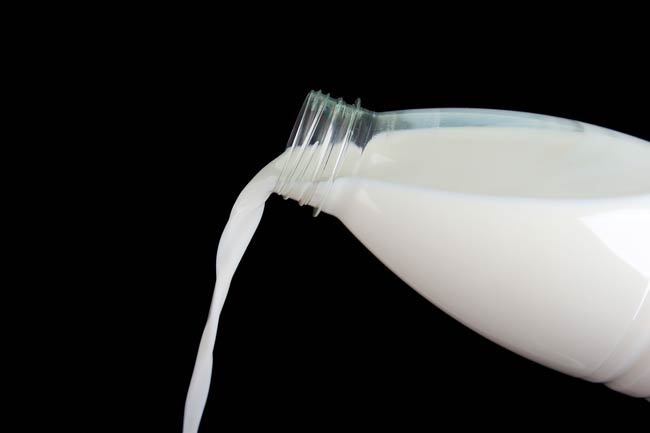
Photo credit: bigstock.com
9. Whole Milk/ Milk Products
Although milk, and many milk products, has calcium, vitamin B, and protein, they also have high levels of fat, hormones, and antibiotics. It’s been suggested that perhaps as many as 6 out of every 10 Americans have some type of milk intolerance, which makes you wonder if, biologically anyway, we really have a need for milk at all. The dairy industry will try to tell you that milk is “Mother Nature’s Perfect Food,” and for cows, it is!
For humans, though, perhaps not so much. At least not the commercially processed homogenized, pasteurized milk and milk products we buy at the supermarket. Milk cows have a constant source of a growth hormone given to them through a time released tablet which is put under the skin of the cow, near the ear. After slaughter, the ears are cut off, but these hormones have been absorbed through into the cow’s body, including the milk, right up until that ear is cut off. Also, because factor farmed cows are kept in such tight, dirty conditions, they are regularly fed antibiotics to avoid infection. Antibiotics, friends, that pass into the milk of dairy cows. Yuck.
Raw and organic milk is a much better choice. Raw milk helps the body absorb more healthy vitamins like D, A, and B. Raw milk has also been shown to help protect individuals from asthma and allergies.
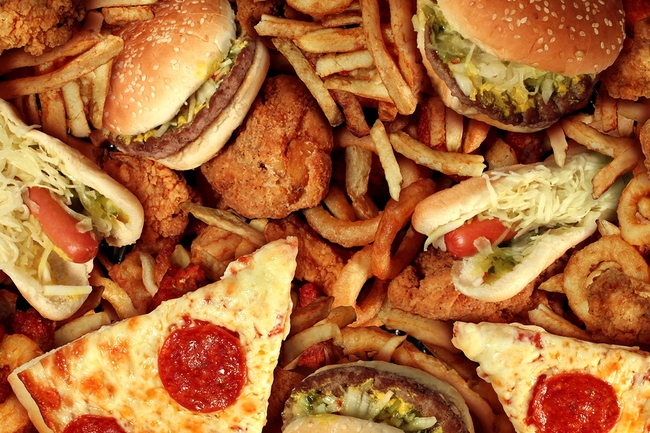
Photo credit: bigstock.com
10. Fried Foods
You don’t have to be a rocket scientist to know that fried foods aren’t good for you. This includes fried chicken, French fries, fried meats such as hamburgers, and onion rings.
Fried foods really pile on the pounds and cause serious health issues such as higher cholesterol levels, and high blood pressure, which often comes with cardiovascular disease. Fried foods upset the entire digestive system and often cause acid reflux, heartburn, and exacerbate the symptoms of those suffering from IBD.
SEE ALSO: Top 10 GMO Foods to Avoid
Never fry your meats or foods in a pan filled with oil. Try broiling or baking your foods instead. You can have that fried food taste without the dangers of frying. Baked chicken breasts in the oven with a coating of herbs and spices. Make a healthier version of French fries by coating the potatoes with a drizzle of olive oil, then adding spices such as seasoned salt and lemon pepper, then bake them.

Photo credit: bigstock.com
Now that you know what are the 10 foods to avoid and eliminate from your diet, let’s take a look at the naturally healthy and detoxifying foods that you can add to your dinner plate. As always, each of these foods should be organic and eaten raw, if possible, for your best health.
1. Blueberries
Super healthy blueberries, who doesn’t love them? These blue jewels contain tons of healthy antioxidant power which only get stronger when this fruit is frozen. All it takes is 300 grams of blueberries to protect you from free radicals which damage your DNA and cause numerous health problems, including cancer and premature aging.
These antioxidants are also great for protecting your eye health. Blueberries also act like miniature antibiotics as they stop bacteria from forming in the urinary tract. You can also skip that toxic flu shot, as blueberries contain antiviral compounds and terrific detoxifying phytonutrients called proanthocyanidins that reduce inflammation and are your strongest source of antioxidants by far. Blueberries are a great choice for diabetics, as they have a low glycemic index.
So there is no excuse for not keeping a bag of frozen, organic blueberries in the freezer and putting those little blue fruits in everything imaginable.

Photo credit: bigstock.com
2. Garlic
Good for just about everything, garlic is on many detox diet lists, and for good reason. Garlic not only improves your immune system, but it helps to detoxify the liver. Perhaps one of the best things about garlic is that you can eat lots of it, and often, and never worry about your body building a resistance or tolerance of it.
Garlic is just as powerful a detox if you eat it once a week or once every hour. It’s the sulfur compounds in garlic that make it smell so strong, but also make it so great at detox. The antibiotic properties in garlic will also help to heal your body from any damage caused by eating those more toxic food listed above.
Garlic is at its best and its strongest when eaten raw, so if you don’t have any plans for kissing, crush a clove or two just a bit to release the oils, then swallow them whole. If that’s a bit much for your taste buds, then add garlic to just about everything; soup, salads, stir fries, eggs, stews, you name it.

Photo credit: bigstock.com
3. Watercress
Give your liver a big cleaning kick by eating watercress. If you regularly make smoothies for detox power, then add some watercress to them. Watercress encourages the liver to release powerful enzymes that help to rid it of toxic buildup and clean things up. Some studies suggest that eating watercress daily can help prevent breast cancer.
Watercress is high in vitamin K, which is important for reducing the plaque on the walls of the arteries and reduces inflammation in the body, which is linked to several chronic diseases. Now, watercress is one of those acquired taste foods, so don’t reject it simply because you didn’t like it the first time around. This veggie has a snappy, peppery crunch so it works well in salads, or try it on sandwiches or even in soup. Any place you would normally use lettuce, you can use watercress instead.
Don’t give up just because you didn’t like it the first way you tried it. Watercress has so much to offer in the way of nutrition and detoxifying compounds that it’s worth acquiring a taste for it.

Photo credit: bigstock.com
4. Broccoli
Broccoli is on every “good for you” list, isn’t it? Well, that probably because it is! Broccoli is high in antioxidants that protect you from those health damaging free radicals that damage the DNA of your cells and cause severe health problems, such as cancer. This green veggie works with the enzymes in your liver to bind to toxins and help remove them from your body.
Broccoli is known for its powerful compound called sulforaphane, which prevents allergies, diabetes, allergies, and osteoporosis. Sulforaphane has an important place in the detoxification of your body. Broccoli contains another compound called glucoraphanin, which is known to have a protective effect on the stomach lining and protect the stomach from ulcers and the destructive bacteria Helicobacter pylori. This study was listed in the 2009 journal Cancer Prevention Research.
The phytochemicals in broccoli are released when we chew, chop, and digest broccoli, so try to eat this veggie as raw as possible. Lightly steam it if you must cook it, but don’t microwave it, as this destroys the detox and most of its nutritional compounds.

Photo credit: bigstock.com
5. Strawberries
As a yummy treat, strawberries are hard to beat, and perhaps Mother Nature made them that way to protect us from cancers. Strawberries, like all berries, contain strong antioxidants, which stop a natural process in the body that makes free radicals which cause cell damage. Some studies suggest that berries can also slow or stop cancers from spreading.
Strawberries have some of the highest concentration of antioxidants of any fruit, and the more antioxidants you can get into your body, the better. Strawberries are also a great source of vitamin C, which supports a healthy immune system and helps to maintain the collagen in your skin and joints, which can make you both look and feel younger.
Unfortunately, strawberries always end up on the dirty dozen list when it comes to pesticide contamination, and since they can be delicate, they can be difficult to wash without squashing. Always buy organic to avoid putting more toxins in your body.
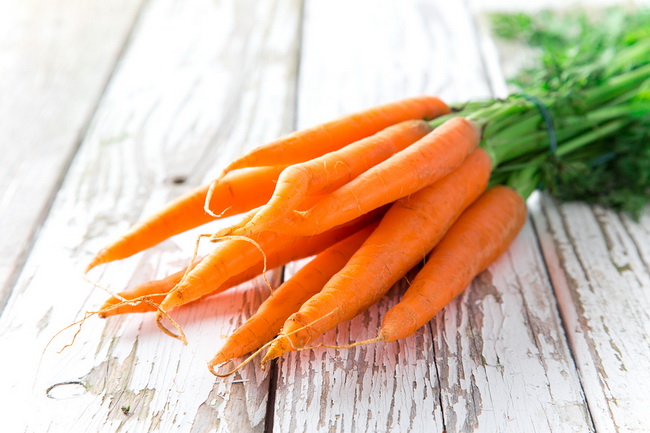
Photo credit: bigstock.com
6. Carrots
Carrots are probably best known for their vitamin A content, which comes from beta-carotene. Carrots help to protect your liver from many of the toxins found in our foods and the environment.
Carrots are high in dietary fiber, which is really important for good digestive health and for maintaining a healthy colon, which moves toxins and waste out of the body. If you wonder how to relieve constipation, fiber comes out to be so important. It also protects your stomach and colon from terrible diseases, including colorectal cancers.
Diets that are high in beta-carotene have been linked to a reduced risk of developing several types of cancer, especially lung cancer. One study found that eating carrots, and other fiber rich foods, reduced the risk of developing colon cancer by as much as 24 percent. Carrots are best when organic and raw.
Just a warning about those baby carrots you see in the supermarket; these really aren’t baby carrots at all, but large carrots that were misshapen or had some imperfection, so they are shaved down to “baby carrot” size. The main problem with baby carrots is that they are often washed in bleach to lengthen their shelf life.

Photo credit: bigstock.com
7. Cabbage
The lowly cabbage has been used for centuries, both as a food and as medicine. Cabbage is similar to broccoli in its dense concentration of nutrients. Cabbages are high in vitamin C and sulfur, which remove toxins such as uric acid and free radicals from the body. High in fiber, cabbages are another great way to remove toxins by promoting a healthy digestive system and keeping waste moving. Read also about cabbage for cancer and diabetes treatment.
All types of cabbages are loaded with phytonutirents that fight disease and certain types of cancer. Cabbages prevent the formation of oxidative stress and have anti-inflammatory as well as antioxidant compounds. Red cabbage contains the most antioxidants, but green and Chinese cabbage has the largest levels of anti-inflammatory compounds.
No matter how you slice them, no matter which color, no matter how you choose to incorporate cabbage into your diet, you simply can’t go wrong. Coleslaw anyone?
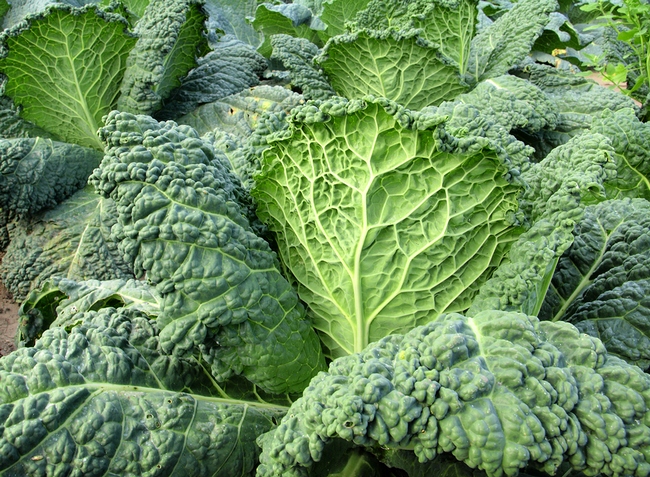
Photo credit: bigstock.com
8. Collard Greens
Collard greens are top when it comes to binding the bile acids in the stomach, which means it lowers cholesterol levels and protects you from certain cancers. Collard greens also contain a special type of phytochemicals, which support your body’s natural detoxification system.
Collard greens are also the perfect food for cancer prevention, as this veggie has 4 specific glucosinolates: glucoraphanin, glucotropaeolin, sinigrin, and gluconasturtiian. Each one of these special glucosinolates is converted into ITC (isothiocyanates), which lowers cancer risks, has anti-inflammatory effects, all while supporting our natural system for detoxification of the body.
You should try to include collard greens in your regular diet if you want to receive all the healthy benefits this soul food has to offer. At the very least, try to eat collard greens twice per week, 1.5 cups each time. For the best health, eat collard greens at least 4 to 5 times per week at 2 cups per serving.
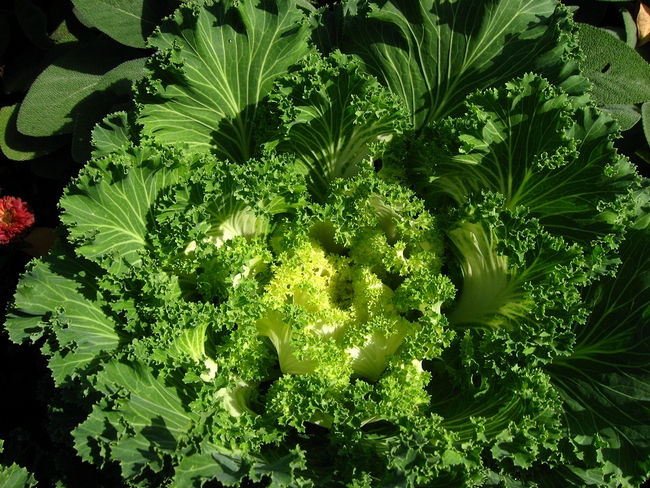
Photo credit: bigstock.com
9. Kale
There is nothing like kale to kick cancer to the curb and detox the body. Kale contains glucosinolates which regulate detox down to a genetic level. Kale has numerous antioxidants and anti-inflammatory compounds, all of which help support the body’s natural detoxification process.
If you eat nothing else, kale is probably one of the go to foods for best overall health and detoxification. Most detox programs encourage eating kale, or mixing it in green smoothies, because of its powerful detox compounds. Kale is also known for the support of healthy kidney function. There is simply no getting around the goodness of kale.
One serving (1 cooked cup) of kale has 10 times your RDA of vitamin K, which is important for healthy bones, and three times your RDA of vitamin A, which supports healthy skin and eyes. The undisputed super food king; kale! Be sure you get some into your diet at least several times per week.
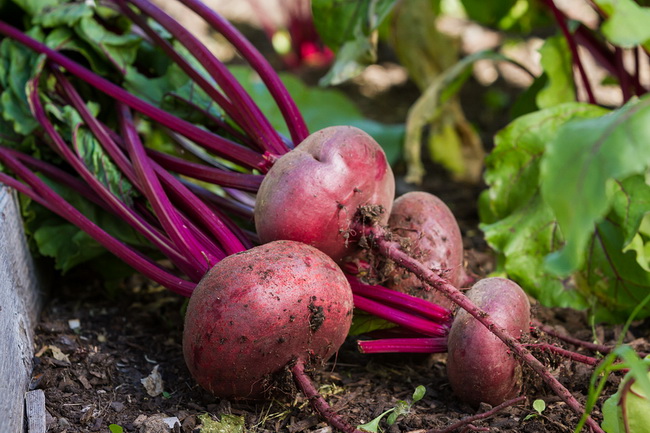
Photo credit: bigstock.com
10. Beets and Beet Greens
Although most of us only see beets when we order a Greek salad, we should make more of an effort to put them in our daily diets. These are a must if you are doing a detox routine. Beets and their greens are often referred to as a super food and there is no doubting that beets are exactly that.
When you do a detox program, you want to be sure that you get rid of all toxins in the body. If waste gets backed up in the colon soon after you finish, you could reabsorb some of those toxins. Beets bind to these toxins and ensure that they make it all the way out! Beets also help reduce free radicals, which makes them a great cancer fighting agent.
Beets are great for detoxification purposes as they are rich in potassium, magnesium, and fiber, which really help your body remove waste. They are also great for your digestive system.
References: Whitney, Eleanor N. and Rolfes, Sharon R., Understanding Nutrition, Sixth Edition, West Publishing Co., 1993.
American Institute for Cancer Research web site.
News release, CDC, March 26, 2009.


































Horseman
Jan 30, 2015 at 1:47 pm
There is bacon out now with no artificial ingredients or nitrates. I’m starting to wonder about the research that goes into some of these articles.